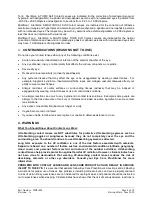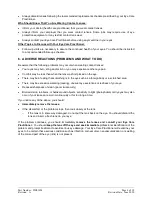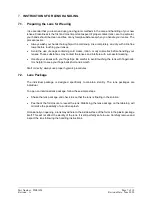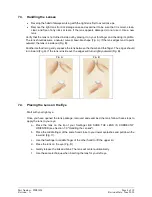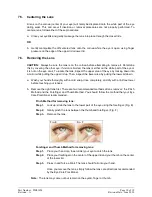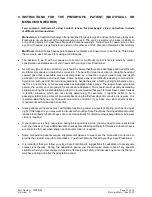
Part Number: PIB01054
Page 6 of 18
Revision: A
Revision Date: June 2020
•
Always discard lenses following the recommended replacement schedule prescribed by your Eye Care
Practitioner.
Who Should Know That You Are Wearing Contact Lenses
:
•
Inform your doctor (health care practitioner) that you wear contact lenses.
•
Always inform your employer that you wear contact lenses. Some jobs may require use of eye
protection equipment or may restrict contact lens wear.
•
Always contact your Eye Care Practitioner before using any medicine in your eyes.
Other Topics to Discuss with Your Eye Care Practitioner
:
•
Follow-up visits are necessary to assure the continued health of your eyes. You should be instructed
to a recommended follow-up schedule.
6. ADVERSE REACTIONS (PROBLEMS AND WHAT TO DO)
Be aware that the following problems may occur when wearing contact lenses:
•
Your eyes may burn, sting and/or itch or you may experience other eye pain.
•
Comfort may be less than when the lens was first placed on the eye.
•
There may be a feeling that something is in the eye such as a foreign body or a scratched area.
•
There may be excessive watering (tearing), unusual eye secretions or redness of your eye.
•
Reduced sharpness of vision (poor visual acuity).
•
Blurred vision, rainbows, or halos around objects, sensitivity to light (photophobia) or dry eyes may also
occur if your lenses are worn continuously or for too long a time.
If you notice any of the above, you should:
•
Immediately remove the lenses.
•
If the discomfort or the problem stops, then look closely at the lens.
o
If the lens is in some way damaged, do not put the lens back on the eye. You should discard the
lens and insert a fresh lens on your eye.
If the problem continues, you should immediately
remove the lenses and consult your Eye Care
Practitioner.
You should
keep the lens off the eye and seek immediate
professional identification of the
problem and prompt treatment to avoid serious eye damage. Your Eye Care Practitioner will examine your
eyes, to be certain that a serious condition such as infection, corneal ulcer, neovascularization, or swelling
of the colored part of the eye (iritis) is not present.




